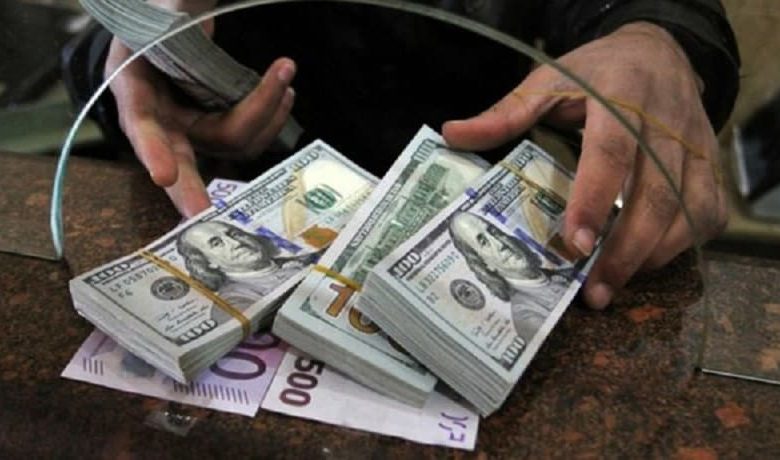Iran’s Economic Freefall and Prospects of a Social Turmoil

Written by
Hossein Daei Alilslam
Hassan Rouhani’s government reaches its final days. despite officials’ bogus claims, Iran’s economic situation continues to deteriorate.
Iran’s rial is rapidly losing value, with the dollar rate reaching 570,000 rials on Monday, an 8% drop in less than a week. This indicates an impending economic crisis and the potential for social unrest in Iran.
It is worth noting that on Sunday, the rial broke a record high of 600,000 thresholds.
The devaluation of the Iranian rial has had a range of negative effects on Iran’s economy and people. It has led to high inflation, making basic goods and services more expensive and reducing purchasing power, as well as an increase in unemployment.
Fearing the consequences of the financial calamity, the regime’s parliament met behind closed doors. The meeting was attended by Mohammad Bagher Ghalibaf, the parliament’s speaker; Mohammad Mokhber, Ebrahim Raisi’s Vice President; Ehsan Khandoozi, the Minister of Economy, and Mohammad Reza Farzin, the Central Bank’s Chief.
The meeting lasted only an hour, and Ghalibaf told reporters, “We have reached the perfect solution to organize the market. We need powerful and serious coordination between the government and Majlis [parliament].”
The bogus claim of finding a solution for the current financial crisis only increased the regime’s infighting, with officials and state media deriding Ghalibaf’s remarks.
“If, with a one-hour meeting, you could have organized the market, why did it take you so long to hold this meeting? Does the economic team understand the effects of half a million rial for a dollar on people’s lives?” asked the former Central Bank Chief, Abdolnasser Hemmati, on his Twitter account.
اعلام کردند؛
امروز مجلس و دولت برای ساماندهی بازار ارز به جمع بندی رسیدند و به زودی در بازار ارز شاهد حل مشکل و ثبات خواهیم بود.
اگر با جلسه یک ساعته میشد برای ساماندهی ارز جمع بندی کرد،تا به حال چه میکردید؟
تیم اقتصادی تأثیر دلار۵۶ هزار تومانی بر زندگی و
سفره مردم را درک میکند؟— Abdolnaser Hemmati عبدالناصر همتی (@Hemmati_ir) February 25, 2023
“There are many who disrupt the market. Some of them have been arrested and acknowledged their plans to create such disruptions in the currency market,” Ehsan Khandoozi claimed in their meeting on Sunday. The blame game, mainly on economic crises, on external factors, is a worn-out method of Tehran’s establishment. In this scenario, security forces raid some houses, arrest some individuals, and, like some years ago, execute some arrestees under the pretext of “disrupting the market.”
“This currency rate is not real, and we all know that there is devilry behind it,” said MP Mohammad Taghi Naghdali on February 23.
On February 21, Iran’s state media reported that Farzin announced the creation of the “Center of Gold and Currency Exchange” to find the real rate of currencies. He emphasized that the government continues to allocate the “Nimaee” currency to certain importers at a rate of 280,000 rials.
By creating a special center and implementing two different exchange rates, the government is basically handing out discounted prices to its own cronies. In other words, they are robbing Peter to pay Paul! Tehran can plunder Iranians by manipulating currency rates, importing goods at low prices, and selling them at higher rates to fund its oppressive regime and suppress protests.
Due to a severe budget deficit of at least 5,000 trillion rials, the regime is hiking the dollar price to generate revenue. The Central Bank earned over 1,100 trillion rials in revenue by increasing the dollar price and selling it in the market during the 40 days leading up to the end of March.
Iran: The Government’s Budget Planners Are Turning the Crisis into a Social Explosion
Tehran and its apologists blame sanctions for Iran’s economic crisis while ignoring domestic mismanagement and corruption. The regime’s focus on external factors deflects accountability.
But this plan could seriously backfire, and the clerical regime is shooting itself in the leg. With this new method of plundering, Tehran might earn some extra cash, but it adds to society’s explosiveness amid a nationwide uprising.
“Playing with currency, gold, and coins, and most importantly, putting their hands in people’s pockets by manipulating the stock and capital markets, ultimately leads to an unfavorable outcome,” wrote the state-run Jahan-e Sanat daily on February 25.
“If social issues caused political turmoil last year, this time it is the economic situation that will make politics tumultuous,” warned the state-run Sharq daily on February 25.

